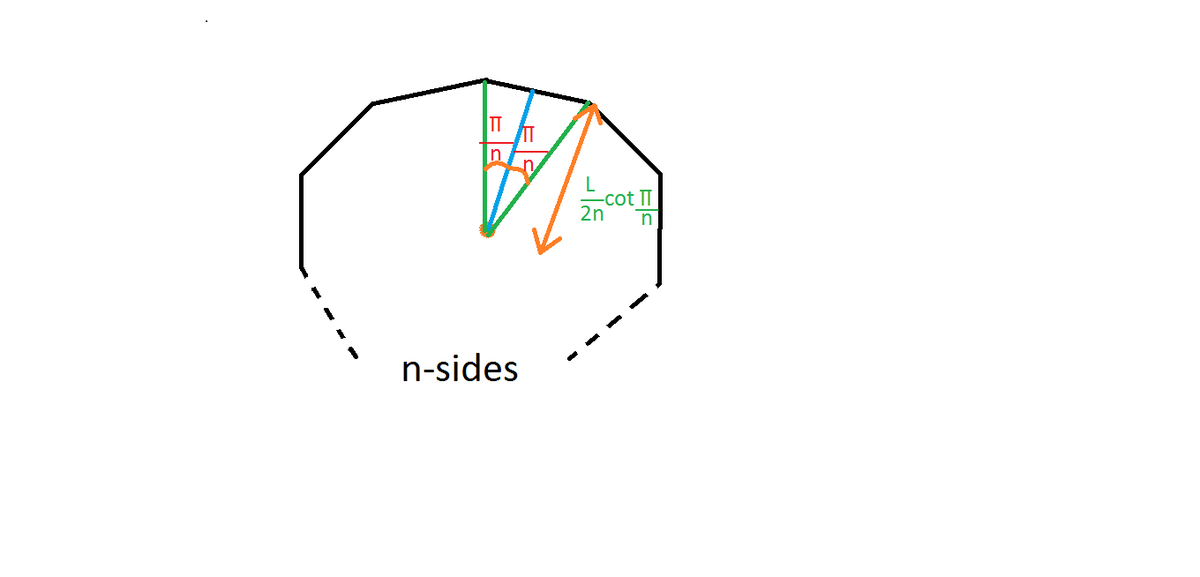Magnetics with polygon
A conducting wire of length is converted into a regular polygon of sides. On passing, a current of through the wire produces a magnetic field of intensity at the center. Find the value of .
Details and Assumptions:
- Give your answer in correct to two decimal places.
The answer is 9.94.
This section requires Javascript.
You are seeing this because something didn't load right. We suggest you, (a) try
refreshing the page, (b) enabling javascript if it is disabled on your browser and,
finally, (c)
loading the
non-javascript version of this page
. We're sorry about the hassle.
Relevant wiki: Magnetic Effects of Current
After converting the wire as required, we would get a n sided regular polygon of side length 2 n l such that the perpendicular distance of the center from each of the sides is equal to its inradius which would be 2 n l cot ( n p i ) .
 We observe that the magnetic field produced at the center by all the side lengths would be in the same direction by right hand thumb rule.
We observe that the magnetic field produced at the center by all the side lengths would be in the same direction by right hand thumb rule.
Applying the formula for magnetic field produced by a finite wire = 4 π d μ 0 I ( sin ( C ) + sin ( D ) ) .
B B net = n × B = 4 π 2 n l cot ( n π ) μ 0 I ( s i n ( n π ) + s i n ( n π ) ) = π l cot ( n π ) μ 0 I n 2 sin ( n π )
Now, plugging in I = 5 A , L = 2 m , n = 1 5 and μ 0 = 4 π × 1 0 − 7 , we get:-
B net = 9 . 9 4 μ T